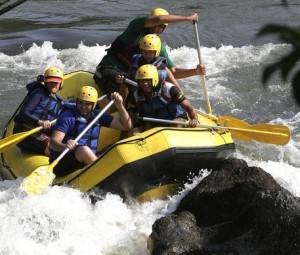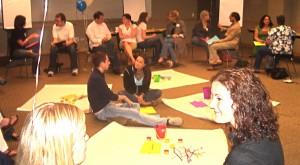The ability to effectively frame and solve problems in the cockpit in a high stakes, rapidly unfolding situation is called “airmanship.” In leadership development, we call this learning agility.

With the first anniversary of the tragic Boeing 737 Max crash of Lion Air Flight 610 followed months later by Ethiopian Airlines Flight 302 upon us, there is a new wave of coverage in the news. As families continue to demand answers and accountability and outside entities work to understand what went wrong, another line of inquiry is being explored that has implications for anyone who works in high-stakes environments.
While not the ultimate source of the disasters, some, such as journalist and former commercial airline pilot, William Langewiesche, question whether or not the pilots’ training prepared them to be effective in complex high stakes situations (2019).
I have written about another key aspect of Cockpit Resource Management (CRM), the ability to communicate, collaborate and coordinate in the heat of the moment in The Agility Shift.
Also key is the ability to effectively frame and solve problems in the cockpit in a rapidly unfolding situation or “airmanship” (applied equally to men and women).
What is “Airmanship”?
Its full meaning is difficult to convey. It includes a visceral sense of navigation, an operational understanding of weather and weather information, the ability to form mental maps of traffic flows, fluency in the nuance of radio communications and, especially, a deep appreciation for the interplay between energy, inertia and wings. Airplanes are living things. The best pilots do not sit in cockpits so much as strap them on (Langewiesche, 2019).
A recent analysis by the New York Times of available flight data and cockpit recordings of these doomed flights provide some evidence that the crews of both doomed flights may not have had, or were not able to access their capacity for “airmanship” when the stakes were highest. Langewiesche sounds an alarm for the flying public.
. . . it is certain that thousands of similar crews are at work around the world, enduring as rote pilots and apparently safe, but only so long as conditions are routine (2019).
Many fields have variations on the term “airmanship.” For example, miners who have an intuitive connection to the state of a mine, and potential threats to their safety are said to have “pit sense.” (Kamouche, K. and Maguire, K., 2010) while Aboagye-Nimo, E and Raiden, A (2016) use the broader term “site-sense” to include any variety of settings in which the ability to access and apply tacit knowledge is essential to success.
For those of us working in or with organizations, the stakes may not always be life and death, but they are often urgent and high. To stay competitive leaders at all levels of the organization must be able to respond quickly and effectively to a wide range of unexpected events and information; they must be able to make decisions in the midst of uncertainty, and they must be able to rapidly make sense of complex and volatile situations. In short, they need to develop “airmanship.”
Airmanship Requires Learning Agility
At its most essential, airmanship and site-sense share the same underlying competence: the ability to learn and adapt in changing contexts. In leadership development, we refer to this competency as learning agility. In their study of more than 190 executives’ significant learning experiences, management researchers identified the key to success within a complex organization: the ability to manage something new without having to master it first (McCall, Lombardo and Morrison, 1988). Learning agility is not simply the ability to think on your feet, it is the ability to apply lessons learned in one context to another, often more complex, one situation.
The good news is that it is possible to develop learning agility, though it doesn’t happen without concerted and intentional effort.
How the United States Navy Uses Learning Agility to Instruct Fighter Pilots
The United States Navy manages to instill a sense of this in its fledgling fighter pilots by ramming them through rigorous classroom instruction and then requiring them to fly at bank angles without limits, including upside down. The same cannot be expected of airline pilots who never fly solo and whose entire experience consists of catering to passengers who flinch in mild turbulence, refer to “air pockets” in cocktail conversation and think they are near death if bank angles exceed 30 degrees. The problem exists for many American and European pilots, too. Unless they make extraordinary efforts — for instance, going out to fly aerobatics, fly sailplanes or wander among the airstrips of backcountry Idaho — they may never develop true airmanship no matter the length of their careers (Langewiesche, 2019).
Training to Develop Learning Agility
Over the past several years working with a wide range of organizations to help them make the agility shift and build more adaptable teams and organizations, we have found a number of effective strategies to help leaders across the  enterprise develop their learning agility competence, capacity, and confidence.
enterprise develop their learning agility competence, capacity, and confidence.
Each of the following can be integrated into formal or informal learning programs, as well as be used in coaching and mentoring for learning agility:
- Seek and provide learning experiences that call for adaptation. Even if you are learning a new skill, it is important to build enough confidence that you can apply that skill in a variety of situations (high stakes, uncertainty, missing or changing information, etc.). In formal training, be sure to design into your program learning activities that have some complexity and not a single right answer. If you, yourself, are the learner or are mentoring others, be sure to seek out and encourage your mentees to look for these opportunities in their roles.
- Experiment with scenario-based learning that requires that you/your learners communicate, collaborate, and coordinate with their Relational Web of skills, knowledge, talent, and resources. We regularly design experiential learning opportunities like this for teams to develop these capacities. You can also use these learning strategies as ‘thought-experiments” for individual and team reflection and idea generation.
- Become a Cognitive Apprentice. Coaching and mentoring are excellent ways to learn a new role, build confidence and self-awareness, and progress toward a host of personal and professional goals. Sometimes overlooked in coaching and other informal learning strategies is the value of understanding an expert’s way of framing problems and opportunities and determining a course of action. This modeling process is sometimes called a cognitive apprenticeship (Woolley, Norman N.; Jarvis, Yvonne, 2007). Learn to ask and help your learners probe for the thinking process that led to key decisions. Sometimes it can be as simple as asking questions like: “How did you zero in on __________ as the key issue?” or “How did you come to that decision?” Listen to the responses and for how experts question their own assumptions and process complex or competing narratives.
- Do what scares you. Perhaps the best way for you to develop their competence, capacity, and confidence is to seek new opportunities outside of your comfort zone intentionally. The more comfortable you (and your learners) can become in uncomfortable, even scary, situations, the more likely you will be able to think and function clearly when the stakes are high.
Understanding How Learning Agility can Serve us in a Crisis
No one is suggesting that developing airmanship or learning agility vindicates what appears to have been serious flaws in oversight and design of the Boeing 737 Max. However, these and other high stakes incidents remind us that at the center of every operational crisis, are human beings who must quickly assess the situation and tap their available resources to respond as quickly and effectively as possible.
While we cannot control or train for every possible situation, we can be more intentional training for airmanship and developing our own and other’s learning agility.
What other strategies do you use to develop your own and others’ learning agility?
Discover more approaches for learning agility, and other customizable talent development solutions to make your agility shift!
•••••••••••••
Aboagye-Nimo, E and Raiden, A (2016) Introducing Site Sense: Comparing Situated Knowledge in Construction to Coalmining. In: P W Chan and C J Neilson (Eds.) Proceedings of the 32nd Annual ARCOM Conference, 5-7 September 2016, Manchester, UK, Association of Researchers in Construction Management, Vol 1, 467-476.
Kamoche, K. and Maguire, K., 2011. Pit sense: Appropriation of practice-based knowledge in a UK coal mine. Human Relations, 64 (5), pp. 725-744.
Langewiesche, W. (2019, September 21, 2019). What really brought down the Boeing 737 Max? New York Times Sunday Magazine.
McCall, M. W., Lombardo, M. M., & Morrison, A. M. (1988). Lessons of experience: How successful executives develop on the job. Lexington, MA: Lexington Books.
Meyer, P. (2015). The Agility Shift: Creating agile and effective leaders, teams and organizations. Abingdon, Oxon: Routledge.
Woolley, Norman N.; Jarvis, Yvonne (January 2007). “Situated cognition and cognitive apprenticeship: A model for teaching and learning clinical skills in a technologically rich and authentic learning environment”. Nurse Education Today. 27 (1): 73–79.

